
- Subject:
- Psychology
- Social Science
- Material Type:
- Module
- Date Added:
- 07/10/2017


By the end of this section, you will be able to:Distinguish between sensation and perceptionDescribe the concepts of absolute threshold and difference thresholdDiscuss the roles attention, motivation, and sensory adaptation play in perception
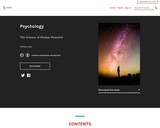
The first chapter provides an overview of the textbook and reviews the history of psychology and its methodology. Psychology is described as a science studying how hereditary (nature) and experiential (nurture) variables interact to influence the thoughts, feelings, and behavior of individuals. The remainder of the text will be organized in sections entitled “Mostly Nature” (Biological Psychology; Sensation & Perception; Motivation & Emotion), “Mostly Nurture” (Direct Learning; Indirect Learning (i.e., observational learning and language); Cognition), and “Nature/Nurture” (Human Development; Personality; Social Psychology; Maladaptive Behavior; Professional Psychology and Human Potential).

This course provides an introduction to important philosophical questions about the mind, specifically those that are intimately connected with contemporary psychology and neuroscience. Are our concepts innate, or are they acquired by experience? (And what does it even mean to call a concept 'innate'?) Are 'mental images' pictures in the head? Is color in the mind or in the world? Is the mind nothing more than the brain? Can there be a science of consciousness? The course will include guest lectures by Professors.
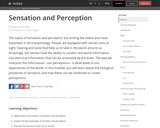
The topics of sensation and perception are among the oldest and most important in all of psychology. People are equipped with senses such as sight, hearing and taste that help us to take in the world around us. Amazingly, our senses have the ability to convert real-world information into electrical information that can be processed by the brain. The way we interpret this information-- our perceptions-- is what leads to our experiences of the world. In this module, you will learn about the biological processes of sensation and how these can be combined to create perceptions.
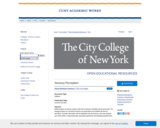
Different types of sensory systems with their functional modalities will be presented. The biological bases for how these functions are generated and modified will then be described. Scientific information will be integrated into the lectures, such that students use critical skills in interpreting data, proposing hypotheses and designing experiments.

This course examines the neural bases of sensory perception. The focus is on physiological and anatomical studies of the mammalian nervous system as well as behavioral studies of animals and humans. Topics include visual pattern, color and depth perception, auditory responses and sound localization, and somatosensory perception.
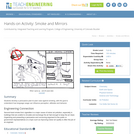
Students develop a persuasive peer-to-peer case against smoking, with the goal to understand how language usage can influence perception, attitudes and behavior.

Social cognition is the area of social psychology that examines how people perceive and think about their social world. This module provides an overview of key topics within social cognition and attitudes, including judgmental heuristics, social prediction, affective and motivational influences on judgment, and explicit and implicit attitudes.

In this course, we will cover topics and skills to help you reconnect with yourself and connect with others on a social level. Footage: pexels.com

Millions of people are on-line today and the number is rapidly growing - yet this virtual crowd is often invisible. In this course we will examine ways of visualizing people, their activities and their interactions. Students will study the cognitive and cultural basis for social visualization through readings drawn from sociology, psychology and interface design and they will explore new ways of depicting virtual crowds and mapping electronic spaces through a series of design exercises.

This course examines the issues, principles, and challenges toward building machines that cooperate with humans and with other machines. Philosophical, scientific, and theoretical insights into this subject will be covered, as well as how these ideas are manifest in both natural and artificial systems (e.g. software agents and robots).

An advanced seminar on issues of current interest in human and machine vision. Topics vary from year to year. This year, the class will involve studying the perception of materials. Participants discuss current literature as well as their ongoing research. Topics are tackled from multiple standpoints, including optics, psychophysics, computer graphics and computer vision.
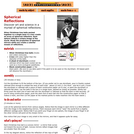
In this art meets science activity, learners pack silver, ball-shaped ornaments in a single layer in a box to create an array of spherical reflectors. Learners can use this as a tool to study the properties of spherical mirrors while creating colorful mosaic reflections. This is a great optics activity to use during the holiday season or any time of year.

Students explore the physical and psychological effect of stress and tension on human beings. Concepts of stress and stress management are introduced. Students discover how perception serves to fuel a huge industry dedicated to minimizing risk and relieving stress. Students complete a writing activity focused on developing critical thinking skills. Note: The literacy activities for the Mechanics unit are based on physical themes that have broad application to our experience in the world concepts of rhythm, balance, spin, gravity, levity, inertia, momentum, friction, stress and tension.

This course explores the diverse ways that people teach and learn—in different countries, in different disciplines, and in different subcultures. We will discuss how theories of learning can be applied to a variety of hands-on, in-class learning activities. We compare schooling to other forms of knowledge transmission from initiation and apprenticeship to recent innovations in online education such as MOOCs. Students will employ a range of qualitative methods in conducting original research on topics of their choice.
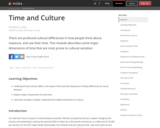
There are profound cultural differences in how people think about, measure, and use their time. This module describes some major dimensions of time that are most prone to cultural variation.
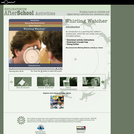
In this activity, learners make a stroboscope--a spinning disk with slits around the edge that you look through. Brief but frequent glimpses of images seen through the slits lead to a surprising result, which teaches learners about vision and the human nervous system. The activity includes three short online videos: Introduction, Step-by-Step Instructions, and What's Going On. Also available: a concept map and a "Going Further" document that suggests variations on this activity.
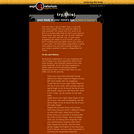
This activity is about how you form mental images of your body's position in space, independent of vision. Can you take a sip of water from a cup with your eyes closed? If so, how are you able to navigate this maneuver without seeing the cup? Find out here!
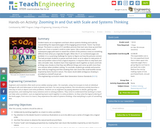
Student teams act as engineers and learn about systems thinking and scale by reassembling the separated pages of the engaging picture book, “Zoom,” by Istvan Banyai. The book is a series of 31 wordless pictures that start very close-up and then zoom out—from a rooster’s comb to outer space. Like a movie camera, each subsequent page pulls back to reveal the context of the previous scene as something different than what you originally thought. When the 31 un-numbered pages are jumbled, it is a surprising challenge for teams to figure out how the pictures connect. The task prompts students to pause and look closer so as to adjust to new points of view and problem solve to find a logical sequence. It requires them to step back and take a broader view. Students learn that engineers work together as teams and look at things very closely so that they see different things and come up with more than one solution when problem solving. To conclude, students go outside and practice their skills by imagining and then drawing their own Zoom-like small booklet stories inspired by items found in nature. The classic duck/rabbit ambiguous drawing is provided as a kickoff visual aid.